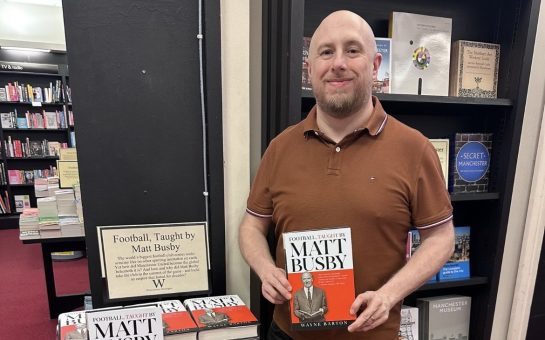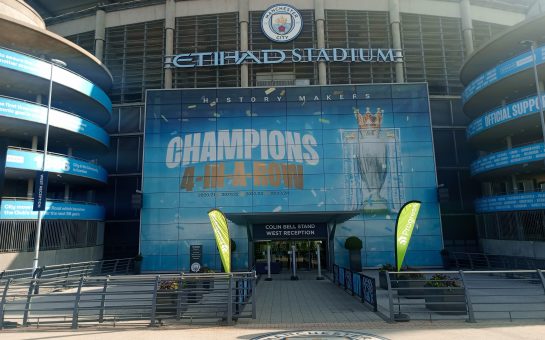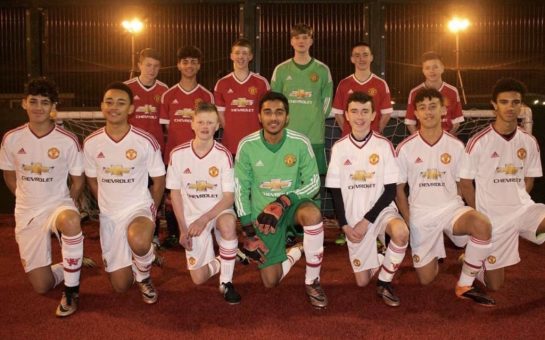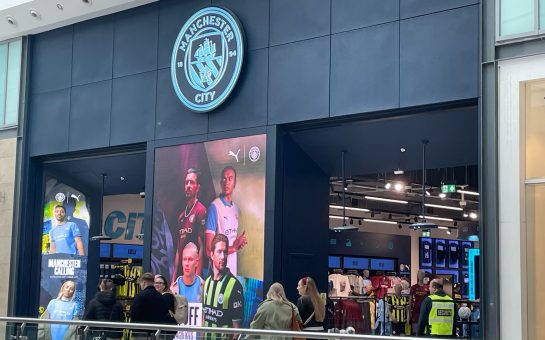Sir Alex Ferguson brandished them the ‘noisy neighbours’ though for all of Manchester City’s big spending – and however far that gets them on the field of play – the club is creating an enviable imprint.
Whereas upstairs at the Etihad are clearly working hard at establishing City as a world brand, with their franchises in New York and Melbourne providing handholds in America and Australia, the club’s newfound wealth is in turn boosting Manchester’s reputation.
As much as this may grate with Manchester United fans, while their rivals turn up the decibels and begin to encroach on their long-held spotlight, Manchester now has two clubs which – disregarding United’s on-going adjustment to the departure of Ferguson following 26 years and 38 trophies – can compete for the title.
Since they moved to the City of Manchester Stadium in 2003, the Blue half of Manchester has been getting louder.
Yes, it took until the FA Cup Final in 2011 – their first trophy since 1976 – following three years of unbridled spending, for the first fruit of Sheikh Mansour’s 2008 takeover to be borne.
Then in 2012 came what the Citizens really craved, their first league title in 44 years, and a clear message was sent over to the long-dominant red half of Manchester that their old nemesis was back.
As their cross-town rivals are always ready to point out, shelling out over half a billion pounds in five years is not the ‘traditional’ way to secure trophies.
But, as Chelsea have already shown, and Paris Saint-Germain and Monaco are trying to imitate, it is becoming ever-more popular.
So United fans can sit and crow about hollow success and buying glory and so on… but the difference between City and their contemporaries is how deep the foundations have been laid.
The most recent and obvious thing for Blues to point out when debating with their red counterparts is last week’s Manchester derby – despite all the talk of the City line-up’s fiscal worth, it actually cost less to assemble than the side they completely out-classed.
But for a clearer perspective you have to look beyond the balance sheets and gaze eastwards from Manchester’s city centre.
Eastlands, a former wasteland beyond the derelict cotton mills of Ancoats, received its first lifeline when Manchester was awarded the 2002 Commonwealth Games and the City of Manchester Stadium was constructed.
But what would have happened to the area following that summer revival if Manchester City had not opted to lease the stadium from the council?
Without wanting to prophesise retrospectively, there are plenty of examples of underused or dilapidated arenas built for single events – see the Athens and Beijing Olympic parks for recent cases.
Of course City were hardly being entirely unselfish – they got a brand new stadium on a relatively cheap lease.
The important details are what they have done since leaving Maine Road, and the most interesting ones lie beyond the pitch.
One of Sheikh Mansour’s goals, other than to win trophies and challenge United for the title of Manchester’s biggest club, is to create a legacy, and he knows that one of the best ways to do this is to regenerate the communities of east Manchester.
Looking beyond the masts of the stadium, now known as the Etihad, there is the City youth academy.
Naturally there are those who will cite the fact that City’s starting line-ups rarely include more than one British player – Joe Hart in goal, while James Milner makes sporadic substitute appearances – and will argue that this does not serve either English football or the local community.
But looking at the academy roster, you will see that a large proportion of the players enrolled are locally-sourced Manchester lads.
Of course, few of them might make it to senior level with the club, let alone become first-team regulars, but even if they are sold on, the fact remains that they were trained and developed by Manchester City.
And somewhat ironically, the sons of Phil Neville and Robin van Persie are currently enrolled, so they must be doing something right in Eastlands to induce such a conflict of interests.
Though City’s resurgence means that on a tribal level tensions between the two are at an all-time high, it can only be beneficial for Manchester as a city.
Whether United fans like it or not, elevated status in the football world goes hand in hand with increased tourist revenue, both as a direct and indirect result of City’s rebirth.
So while Reds may be wishing that Sheikh Mansour will one day get bored and pull the plug, leaving their rivals to spiral into wells of debt, they should consider that his investment is not just beneficial on the pitch, it is out there on streets too.
City’s good deeds extend beyond servicing their own cause too.
In 2009 Hyde F.C., who play in the Conference and then known as Hyde United, were taken to the High Court with debts of £120,000 and in serious danger of going into administration.
City in the Community, a charity arm of City, offered Hyde a shirt sponsorship contract – albeit in exchange for the club removing the word ‘United’ from their name – which saved them from bankruptcy.
Soon after, in search of a ground for their reserve team, City struck a deal allowing them to use Hyde’s Ewen Fields before ploughing £250,000 into renovating the stadium.
Main image courtesy of Paul Currie/Action Images, with thanks.



